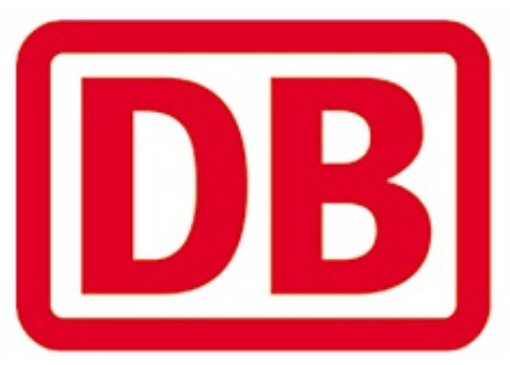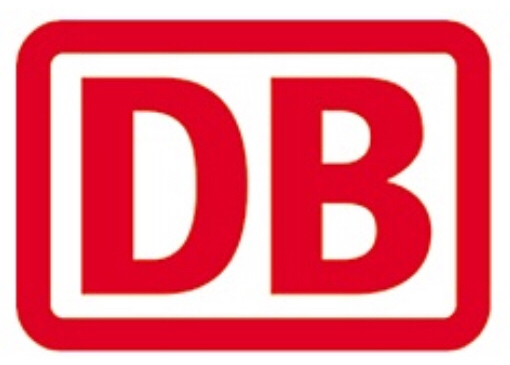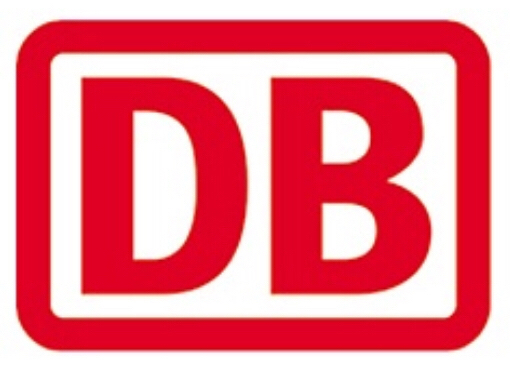Title Page
-
Conducted on
-
Prepared by
-
Location
General Safety Management
-
Site Manager is accountable for safety in the facility
-
Health and safety responsible appointed for facility, trained and competent to support site manager (1)
-
Health, safety and environment awareness training is conducted for every new employee and refreshed regularly conducted for every new employee and refreshed regularly based on local regulations
-
Risk assessment are completed for all tasks, reviewed and communicated regularly based on local regulations by a trained person
-
All accidents and near misses (3) are communicated and discussed with all employees on regular base
-
Detailed root cause investigation about accidents and near misses are carried out and documented
-
Fundamental safety aspects are discussed on the shop floor on daily basis (i.e. hazardous situations from other sites, benchmarks, informative short videos, refreshment of procedures, etc.)
-
All facilities must complete regular (strongly advised on a daily basis) inspections of the workplace, for example gemba walks (4). Site manager should attend the gemba walks on an agreed frequency
-
Clear escalation path is defined to report accident and near misses (5)
-
Accidents and near misses are reported to team leaders, supervisors and site manager
-
All accidents reported on regular basis to Head of CL
Rules and Behaviours
-
Clear floor marking for pedestrian walkways
-
It’s forbidden to place anything on emergency exits, pedestrian walkways or driveways
-
It’s forbidden to climb on top of the goods/pallets/racks/forks
-
It’s forbidden to walk and stand under the load of the forklift
-
Operators should stop (6) at all blind spots, listen to horns and sirens, look for people working around
-
It is forbidden to access aisles through racking
-
The use of mobile phones is only permitted when standing inside pedestrian marked areas or in other secure working places (i.e. workplace with barriers, protective equipment, etc.)
-
Smoking is forbidden in the warehouse and offices
-
It is forbidden to be under the influence of drugs and alcohol
-
No food and beverage to be consumed in the warehouse, water to be consumed based on country specific requirements or customer requirements
-
Safety foundation rules must be visualized at the entrance to the warehouse and on the safety guide for the visitors
MHE
-
Only licensed, trained and authorized employees are allowed to use and drive powered/industrial material handling equipment's (7)
-
Thorough examination (8) must be completed regularly and the detailed information displayed on the forklift
-
Before starting to work on the powered industrial MHE each operator confirms acquainting with its technical and visual condition
-
Access to powered/industrial MHEs are controlled to make sure only authorized operators have access
-
Driving operators should wear retaining devices (i.e. protective bars, seat belts, technical equipment, etc.). A risk assessment should be available for specific cases
-
It is forbidden to use mobile phones during operating MHEs
-
It is forbidden to drive with raised forks (Apart from activities such as picking to raised fork, pallet placed conditions, etc.)
-
When driving with restricted field of view it is required to drive backwards
-
It’s prohibited to stand or walk over forks or on pallets carried by the forks
-
Requirement to use sound signal when driving out of the racking aisles, at intersections and other critical areas (the procedure of reasonable usage should be based on risk assessment in place)
-
The MHE should be always parked in a designated parking area and forks must be put on the ground
Powered Pallet Trucks
-
Only licensed, trained and authorized employees are allowed to use and drive PPT
-
Thorough examination must be completed regularly and the detailed information displayed
-
Before starting to work with PPT each operator confirms acquainting with its technical and visual condition
-
Always be cautious of the wide swing of the PPT. Keep your body, especially your feet and ankles in the platform
-
When operating the PPT always face the direction of travel
-
Never use your body to stop the PPTs
-
The PPT should be always parked in a designated parking area
Machines and Equipment
-
Only trained and authorized employees are allowed to use specific equipment
-
Safety manuals / summarized instructions for machines and equipment are available on the site and visible
-
Hazard labels on the machines and equipment clearly visible
-
Regular preventative maintenance is carried out by a qualified service person
-
Before starting to work with equipment the operator controls visual condition and reports faults to supervisor
Hand Tools
-
One should concentrate on the job when using a hand tool (i.e. knives, strapping tools, etc.). Playing with hand tools is strictly prohibited
-
Worn-out or broken knives and sharp tools should be disposed in proper way to avoid injuries
-
When hand tools with sharp corners or edges are used, their direction of movement should be away from the body
-
During usage of utility knives suitable personal protective equipment such as gloves or aprons should be used when necessary to reduce potential injuries. Safer cutting equipment such as safety knives, retractable utility knives should be chosen for use, determined by risk assessment
Loading and Unloading
-
All sites to display signage outside in order to inform visiting drivers of the requirements and rules of the facility
-
There are chocks under the wheels at each ramp. Loading/unloading cannot be started without the chock being placed. The alternative solutions i.e. tie up mechanism should be assessed by H&S Professionals
-
Pedestrians are not permitted to be present in the loading/ unloading area
-
Ramps are well marked: both sides of the ramp should be marked with yellow/black stripe inside and outside if possible
-
Country specific speed restrictions (9) must be followed across the site (Recommended speed limit indoors is between 7 to 10 km/h)
-
A proper process (10) to support reversing of trucks must be implemented
-
No pedestrian access to the warehouse via truck docks
-
No climbing on and off truck docks
-
Define a clear process (11) with truck drivers to eliminate pulling away from loading area before loading/ unloading operation is complete
Storage Safety
-
Racking should be installed by certified suppliers
-
Certified supplier should be consulted before any reconfiguration requirements, adding or changing height of beams
-
Legible information on inspections carried out and date of next inspection is displayed on the racks
-
Any damage to racking must be reported to supervisors who are responsible for adjustment
-
Signage containing information referring to safe working loads of the racking must be displayed on the racks
-
Team leaders make sure of updated information about the capacity of the racks and weight of the goods in WMS (12)
-
Racking uprights are protected with visible bumpers. The bumpers are complete and of good condition.
-
Weight on a pallet is evenly placed
-
Pallets are to stored evenly across the racking beams
-
No pallets are to overhang the racking beams
-
Any products stored above head height with multiple boxes/cases must be wrapped/ secured to avoid fall down products from racks
-
No damaged/ broken pallets are to be placed in racking
-
Only certified pallets (official certificate or formal information from pallet producer) to be received by site. Any non-certified pallets should only be placed in racks with netting/additional supports
-
It is not allowed to walk/be in the narrow ailes when there is a truck in the ailes. If people are walking/working in the narrow aisle the aisle have to be blocked by using a chain (or comparable)
-
Floor stacking rules (including number of layers allowed to stack for different products) have to be decided case by case as a result of the risk analysis
-
Empty pallet storage rules should be based on risk assessment
Working at Height
-
Any ladders purchased must be to EN131 standard and steps must be to EN14183 standard
-
Fall arrest equipment must be considered if work at height is required
-
Safety cage usage should be hold on minimum level. Also a robust process to use safety cages should be generated (i.e. usage permit, safe usage procedure, etc.)
-
Mobile Elevated Work Platforms (MEWPs), cherry pickers, man- up forklifts are preferred methods of working at height
-
Only licensed, trained and authorized employees are allowed to work at height, including ladders
-
Before starting to work at height each operator confirms the equipment with its technical and visual condition
-
Work at Height should only be carried out when no other option is available
-
Risks must be assessed before any work at height commences (13)
-
Local legislation requirements must be considered before any work at height commences
Emergency Preparation - Fire
-
No accumulation of flammable material is permitted in the workplace
-
Electrical equipment is regularly inspected
-
Each facility should have a regularly maintained alarm system
-
Smoking is forbidden in the warehouse and offices
-
Extinguishers, hydrants and hoses are available, free from obstruction, regularly maintained and within expiry date
-
Places of fire equipment are legible and properly marked. Evacuation exit is marked and visible from each place in the facility
-
Access to fire equipment and evacuation exit is unobstructed
-
Evacuation plan (including utility shut off valves) is available at the entrance to the facility and posted clearly inside the building
-
Evacuation plan must be reviewed on a regular basis and/ or when there are significant changes within the building
-
Assembly point after evacuation is determined and legibly marked
-
Evacuation exercises carried out in the warehouse are confirmed and performed regularly (at least twice a year) by appointed evacuation leaders (fire wardens)
Emergency Preparation - First Aid
-
All sites must determine the first aid requirements of the facility taking into consideration number of shifts, employees etc.
-
A 'First Aid Point' contains (Mandatory):
-
Emergency numbers
-
Photos and names of trained and certified First Aiders for easy identification and quick response time during emergencies
-
First aid kit according to local government guidelines
-
Information on the location of first aid points is displayed at the entrance to the facility of each warehouse
-
First Aiders trained and certified according to local government requirements
Dangerous Goods
-
DG identification and handling and storage training conducted regularly based on local regulations
-
Trained spill response personnel on site who carry out regular drills (at least twice a year)
-
Material Safety Data Sheet (MSDS) for all DG products available in working place
-
DG must be kept away from incompatible products (food, pharmaceutical, body care products, etc.)
-
Spillage response equipment and necessary PPE available and easily accessible
-
There is at least one DG certified expert available locally
Batteries
-
Battery charging should take place in a well-ventilated area where smoking, naked flames or other ignition sources are prohibited
-
Charging rooms or areas should have good ventilation located at high level immediately above the batteries; where a large number of batteries are being charged in a confined area, forced ventilation should be considered. Seek further advice from the battery manufacturer
-
Keep electrical apparatus and any other potential sources of ignition well to one side and/or sited below the level of the battery, but not in a position where any spillage of electrolyte could fall onto the electrical apparatus
-
The area should be designated ‘No smoking’ and ‘No naked lights’
-
Where batteries have to be changed, a safe system of work should be in place. The person responsible for changing the batteries should have suitable training and instruction on how the change is to be carried out safely. Battery acid also presents a hazard to skin and eyes
-
When charging vehicle batteries, follow the manufacturers instructions:
-
- ensure all electrical circuits are switched off before connecting/disconnecting batteries
-
- raise the battery cover to aid ventilation during charging; and
-
- wear the correct PPE where required (eg acid-proof apron, gloves and goggles or a visor)"
-
It is forbidden to eat nearby battery charging area
-
Battery charging area should be equipped with eye wash station and suitable fire extinguisher/-s
-
Visible warning signage should be present at the location accordingly
-
Areas used for refuelling industrial trucks with diesel, LPG or petrol should be outside and the risk of fire and explosion should be considered. Refuelling should not take place where there is a likelihood of an accumulation of flammable vapours in the event of a spillage, eg drains, pits, gulleys etc. Smoking should be prohibited and notices should be clearly displayed in these areas and engines should be switched off before refuelling
-
The cylinders of LPG-fuelled lift trucks should be changed outside the warehouse away from all possible sources of ignition
Office Administration
-
Evacuation marking and fire-protection marking are also required in the offices
-
Electric cables must be well-arranged and not damaged! It concerns both: office as well as warehousing environment
-
Clear of obstructions, clean and not slippery.
-
When freezing or snowing parking and walking areas should be cleaned and scattered with salt, sand, etc.
-
When walking the stairs it is required to hold on to the handrail and stairs shall be provided with adequate handrail(s) and that edges of steps have clearly visible nosing
-
While washing floor surfaces and to prevent slips, the wet floors should be indicated by a large label -“Caution: slippery floor” until the surface is dry and the risk of slipping has been removed
Safety of Visitors
-
Each visitor to the warehouse should receive a safety guide (15) containing basic information on the warehouse and safety rules applicable therein + verbal safety instruction
-
Visitors will be escorted by DB Schenker host
-
Each visitor to the warehouse facility must wear protective clothing: a high visibility vest/ jacket and safety footwear. Additional equipment requirements (helmets, glasses, gloves, hearing protections) determined by risk assessment within the facility
Personal Protective Equipment
-
Wearing a high visibility clothing (16) is required in the entire area of the warehouse. The vest must be compliant with the standards, clean and not worn-out. Site manager is responsible for providing them to the employees
-
Safety footwear (17) are required in the entire area of the warehouse. Site manager is responsible for providing the footwear to the employees
-
Safety glasses (18) are required when any task ejects material and the requirement is determined via a risk assessment
-
Gloves (19) are required when any task could cause injury to the hands and the requirement is determined via a risk assessment
-
Helmets (20) are required when any task where the head requires protection and is determined via a risk assessment
-
Hearing protection (21) is required when any task is louder than 80dB and is determined via a risk assessment














